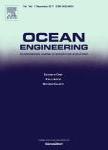版权所有:内蒙古大学图书馆 技术提供:维普资讯• 智图
内蒙古自治区呼和浩特市赛罕区大学西街235号 邮编: 010021

作者机构:BUET Dept Comp Sci & Engn Dhaka 1000 Bangladesh BUET Dept Naval Architecture & Marine Engn Dhaka 1000 Bangladesh
出 版 物:《OCEAN ENGINEERING》 (海洋工程)
年 卷 期:2001年第28卷第12期
页 面:1531-1544页
核心收录:
学科分类:07[理学] 0707[理学-海洋科学] 0824[工学-船舶与海洋工程] 0814[工学-土木工程]
主 题:automatic hull form generation artificial intelligence techniques neural network genetic algorithm
摘 要:The paper describes a methodology for automatic hull form generation of ships with some desired performances using artificial intelligence techniques. The whole implementation Process is divided into three main components. First of all the half-breadth weight matrices are generated that would provide population with pre pre-fitness by examining the relationship of the hull form with the principal dimensions of a number of existing vessels. Secondly, breadth and draft are adjusted using Neural Network Concepts. Breadth, draft, length, displacement and speed of the ship are very related terms and relations among them create some constraints. Neural Networks solve these constraints and adjust the parameters. Finally, Genetic Algorithm is used for searching the exact solution by examining several generations. For this, the algorithms need to measure fitness for every population in every generation. Unfortunately, GA doesn t guarantee fairness of the surface of the hull form, which can t be ignored. So, for every population especially for newborn population fairing techniques would be used. However, being complex geometric shape, hull form surface can t be faired using least-square or other single equation fitting techniques. Fairness is done taking pair-wise points using B-spline functions [CAD 20(1988)]. (C) 2001 Elsevier Science Ltd. All rights reserved.